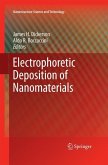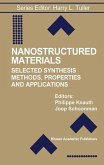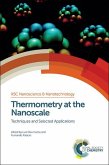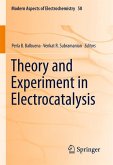For centuries, electrochemistry has played a key role in technologically important areas such as electroplating or corrosion. In recent decades, electrochemical methods are receiving increasing attention in important strongly growing fields of science and technology such as nanosciences (nanoelectrochemistry) and life-sciences (organic and biological electrochemistry).
Characterization, modification and understanding of various electrochemical interfaces or electrochemical processes at the nanoscale, has led to a huge increase of the scientific interest in electrochemical mechanisms as well as of application of electrochemical methods in novel technologies. This book presents exciting emerging scientific and technological aspects of the introduction of the nanodimension in electrochemical approaches are presented in 12 chapters/subchapters.
Characterization, modification and understanding of various electrochemical interfaces or electrochemical processes at the nanoscale, has led to a huge increase of the scientific interest in electrochemical mechanisms as well as of application of electrochemical methods in novel technologies. This book presents exciting emerging scientific and technological aspects of the introduction of the nanodimension in electrochemical approaches are presented in 12 chapters/subchapters.
From the reviews:
"The study of nanostructures has required the development of new instrumental techniques such as atomic force microscopy (AFM) and scanning tunneling microscopy (STM). The present volume describes the uses of such techniques for the study of charged surfaces, including many biological substances, and the transfer of electrons between a nanostructure and an AFM or STM probe. ... Each chapter has been written by an expert in one subcategory of electrochemistry of nanostructures. There are no comparable books. Summing Up: Highly recommended. Upper-division undergraduates through professionals." (A. Fry, Choice, Vol. 46 (11), August, 2009)
"The study of nanostructures has required the development of new instrumental techniques such as atomic force microscopy (AFM) and scanning tunneling microscopy (STM). The present volume describes the uses of such techniques for the study of charged surfaces, including many biological substances, and the transfer of electrons between a nanostructure and an AFM or STM probe. ... Each chapter has been written by an expert in one subcategory of electrochemistry of nanostructures. There are no comparable books. Summing Up: Highly recommended. Upper-division undergraduates through professionals." (A. Fry, Choice, Vol. 46 (11), August, 2009)









